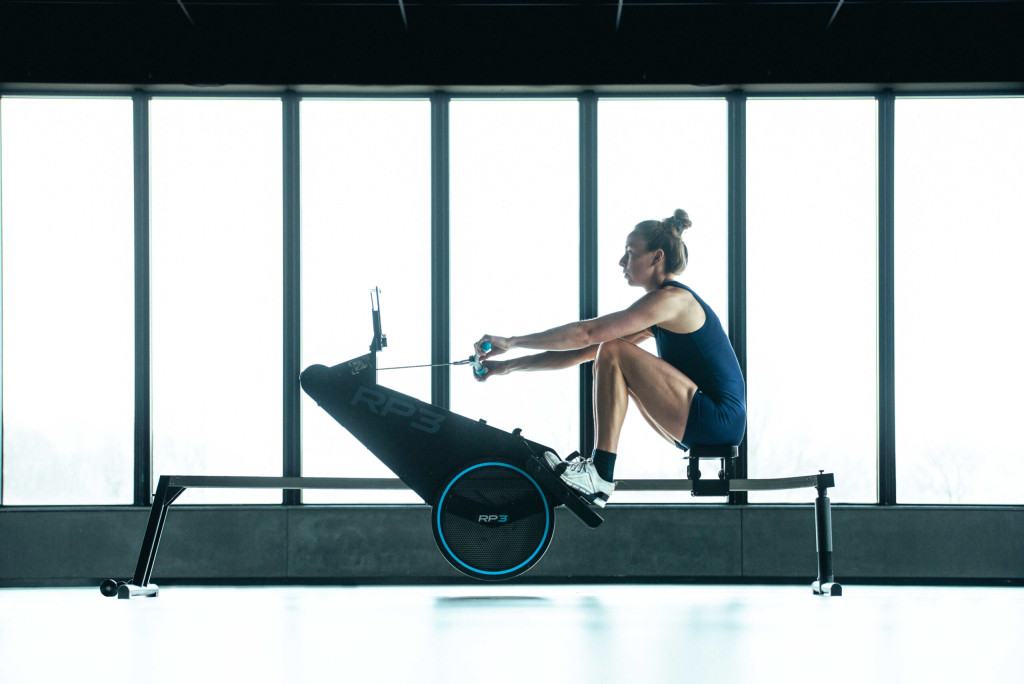Best low-impact cardio options for home
Discover 5 effective low-impact cardio options for home workouts that protect your joints while boosting fitness. Transform your health journey with these sustainable exercises for
Rowing is both cardio and strength training in one efficient workout. When you row, your cardiovascular system gets a significant workout as your heart rate elevates and stays elevated throughout the session. Simultaneously, you’re working against resistance that engages 85% of your body’s muscles, providing strength training benefits. This dual-nature makes rowing one of the most complete exercises available, offering cardiovascular endurance, muscle building, and low-impact conditioning all at once.
Rowing stands apart from most other forms of exercise because it sits perfectly at the intersection of cardiovascular training and strength development. Unlike activities that primarily focus on one fitness component, rowing delivers a comprehensive workout that simultaneously challenges your heart, lungs, and muscles.
When you row, you’re performing a coordinated sequence that requires power from your legs, core stabilization, back engagement, and arm strength. This combination creates a fluid motion that elevates your heart rate while building muscular endurance and strength. The rhythmic nature of rowing also helps develop coordination and promotes a meditative state that many find mentally refreshing.
For home fitness enthusiasts, this makes rowing particularly valuable. Rather than needing multiple pieces of equipment or dividing your limited time between cardio days and strength days, rowing offers both benefits in one time-efficient session.
Rowing is genuinely both cardio and strength training simultaneously, not primarily one or the other. During a rowing workout, your cardiovascular system works continuously as your heart pumps blood to meet the oxygen demands of your active muscles. Your heart rate elevates into the aerobic training zone and can stay there for extended periods, delivering classic cardio benefits like improved heart health and increased stamina.
At the same time, rowing is undeniably strength training. Each stroke requires you to push against resistance with your legs, core, back, and arms. This resistance element builds muscular endurance and strength, particularly when you adjust the machine’s resistance setting to higher levels.
The beauty of rowing lies in this duality. The cardio component comes from the continuous, rhythmic nature of the movement and the sustained elevated heart rate, while the strength component comes from working against the resistance of the flywheel or water mechanism with each stroke.
Compared to traditional cardio exercises like running, cycling, or using an elliptical, rowing offers several distinctive advantages. First, rowing burns substantially more calories—up to 1,000 per hour in intense sessions—because it engages far more muscle groups than most cardio activities. While running primarily works the lower body and cycling targets mainly the legs, rowing activates 85% of your muscles, creating a full-body workout.
Rowing also stands out for its minimal impact on joints. Unlike running, which places significant stress on the ankles, knees, and hips with each footfall, rowing provides cardiovascular benefits without these impact forces. This makes it an excellent option for those recovering from injuries or dealing with joint issues.
Additionally, while traditional cardio exercises predominantly build endurance, rowing simultaneously builds strength, especially in the posterior chain (hamstrings, glutes, back), which many other cardio exercises neglect. This comprehensive approach helps create more balanced fitness and may prevent the muscle loss that can sometimes occur with cardio-only regimes.
Rowing strengthens an impressive range of muscle groups through its four-phase stroke cycle. The leg drive phase primarily targets your quadriceps, hamstrings, and glutes, which generate about 60% of the power in each stroke. These powerful lower body muscles develop significant strength and endurance through the pushing motion.
During the body swing phase, your core engages intensely as you hinge at the hips, working your abdominals, obliques, and lower back. This core stabilization is crucial for proper technique and transfers power efficiently between your lower and upper body.
The arm pull phase engages your upper back (rhomboids, trapezius), shoulders (deltoids), and arms (biceps). These muscles are responsible for the final 20% of power in the stroke and develop definition and endurance through high-repetition resistance work.
Finally, the recovery phase activates your core again for stabilization, along with the anterior shoulder muscles and triceps as you return to the starting position. This comprehensive muscle engagement explains why rowing feels like such a complete workout—because it truly is.
You can easily modify your rowing workouts to emphasize either cardio or strength benefits based on your fitness goals. To focus more on cardiovascular endurance, increase your stroke rate (the number of strokes per minute) while using moderate resistance. Aim for longer sessions of 30-45 minutes at a sustainable pace that keeps your heart rate elevated in the aerobic zone (around 70-80% of your maximum heart rate).
Interval training on a rowing machine is particularly effective for cardiovascular development. Try alternating between periods of higher intensity (like 30 seconds at maximum effort) and active recovery (90 seconds at a comfortable pace).
To emphasize strength building, increase the resistance level and reduce your stroke rate. Focus on powerful, deliberate strokes where you can feel the resistance challenging your muscles. Short, high-intensity sessions with greater resistance will develop muscular strength and power more effectively than longer, lighter sessions.
For a balanced approach that develops both aspects, vary your workouts throughout the week, incorporating both longer, steady-state rows and shorter, higher-resistance sessions to get the best of both worlds.
Dynamic rowing machines differ fundamentally from traditional static machines in how they move during your workout. On a traditional static erg, your body moves back and forth while the machine remains fixed in place. In contrast, on a dynamic rowing machine, both you and the machine move together, creating a more realistic simulation of on-water rowing.
This dynamic movement provides several significant advantages. First, it places less stress on your lower back because the forces are distributed more naturally throughout the stroke. This reduced strain makes dynamic rowing safer for long-term use, especially for those concerned about back health.
Second, dynamic machines allow for a more authentic rowing technique. The moving parts better mimic the feeling of a boat gliding through water, helping you develop proper form that transfers directly to on-water rowing if that’s part of your goals.
Finally, the more natural movement pattern on dynamic machines enables more efficient power transfer, potentially allowing for more effective workouts with less wasted energy. This makes them particularly valuable for serious athletes looking to maximize their training efficiency.
If you’re new to rowing, start by focusing on proper technique rather than intensity or duration. Begin with short sessions of 10-15 minutes at a moderate pace, gradually increasing as your form improves and your fitness builds. The correct technique involves a sequence of legs-core-arms during the drive phase and arms-core-legs during the recovery.
For your first few weeks, use a lower resistance setting that allows you to complete the full range of motion without strain. Focus on maintaining good posture with a straight back, relaxed shoulders, and firm core engagement throughout the stroke.
To develop both cardiovascular fitness and strength as a beginner, aim for 2-3 rowing sessions per week of 20-30 minutes each. Start with a 5-minute warm-up at a slow pace, then alternate between moderate-intensity rowing (3-5 minutes) and short recovery periods (1-2 minutes at a very easy pace).
As you become more comfortable, gradually increase your session duration and explore different workout structures to keep your training fresh and challenging. Remember that consistency is more important than intensity when you’re starting out.
Rowing truly delivers the best of both worlds—it’s simultaneously an effective cardio workout and a comprehensive strength training session. This makes it an exceptionally efficient exercise option for home users with limited space and time. In a single 30-minute rowing session, you can effectively train your cardiovascular system while building muscular endurance and strength across virtually your entire body.
The low-impact nature of rowing means you can work out intensely without the joint stress associated with many other forms of exercise, making it sustainable for the long term. This combination of cardiovascular conditioning, muscular development, and joint-friendly movement is rare in the fitness world.
At RP3 Rowing, we’ve designed our dynamic rowing machines to maximize these benefits while creating the most realistic rowing experience possible. Our Model S for individuals and Model T for teams provide the perfect platform for developing science of rowing cardiovascular fitness and muscular strength simultaneously, all while protecting your joints and improving your technique.
Whether your goal is weight management, improved fitness, or athletic performance, rowing offers a complete solution that few other exercises can match.
If you’re interested in learning more about the benefits of rowing, reach out to our team of experts today.
Discover 5 effective low-impact cardio options for home workouts that protect your joints while boosting fitness. Transform your health journey with these sustainable exercises for
Discover 5 effective low-impact exercises that protect your back while maintaining fitness intensity. Learn proper form techniques to strengthen your spine without risking injury.
Discover 5 effective home workouts that build strength without stressing your joints. Learn fluid movement techniques for pain-free exercise that delivers results while protecting your
Discover effective low-impact fitness strategies that build strength and cardio health without damaging your joints. Learn sustainable workout techniques for long-term health and injury prevention.
Discover 5 effective full-body low-impact workouts perfect for beginners that protect your joints while building strength and fitness. Start your sustainable exercise journey today!
Discover how low-impact fitness creates sustainable health benefits without joint pain. Learn 5 full-body workouts that deliver results while preserving your body for decades of
Discover why low-impact workouts deliver powerful fitness results without joint damage. Learn 6 key benefits and find the perfect exercise for sustainable daily fitness that
Discover why low-impact training on recovery days accelerates muscle repair, prevents injuries, and boosts long-term fitness gains. Learn optimal activities and avoid common recovery mistakes.
Discover why rowing machines deliver a complete workout while protecting your joints. Engage 85% of your muscles with zero impact stress—perfect for fitness enthusiasts of
Discover effective low-impact exercises perfect for returning to fitness after breaks or injuries. Learn 5 joint-friendly workouts that rebuild strength while preventing setbacks on your
Discover 5 low-impact routines that challenge your entire body without stressing your joints. Build strength and burn calories while protecting your knees, hips, and spine.
Discover how rowing uniquely engages 85% of your muscles while enhancing flexibility in one efficient workout. Build strength and mobility simultaneously without stressing your joints.
Discover how consistent low-impact activity delivers powerful physical and mental benefits without joint stress. Build fitness, reduce stress, and improve mobility through sustainable daily movement
Discover why rowing machines offer the ultimate low-impact, full-body workout for home fitness. Get 85% muscle engagement with minimal joint stress—perfect for all ages and
Discover how low-impact exercise protects your joints while delivering powerful fitness results. Learn 5 joint-friendly workouts that maintain mobility and prevent pain as you age.
Discover how to build sustainable low-impact fitness habits that protect your joints while delivering exceptional results. Learn proven strategies for lifelong exercise consistency without pain.

We will send you a personal quote as soon as possible.
As soon as the quote is ready, you will receive a link by email to order directly.
